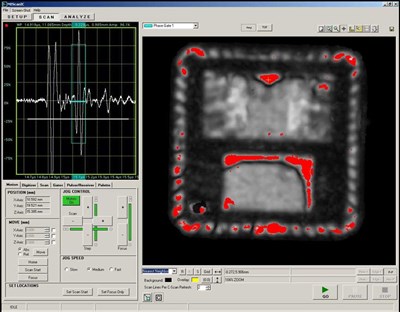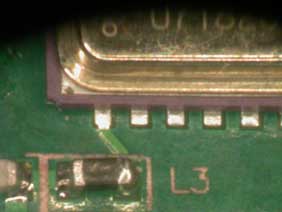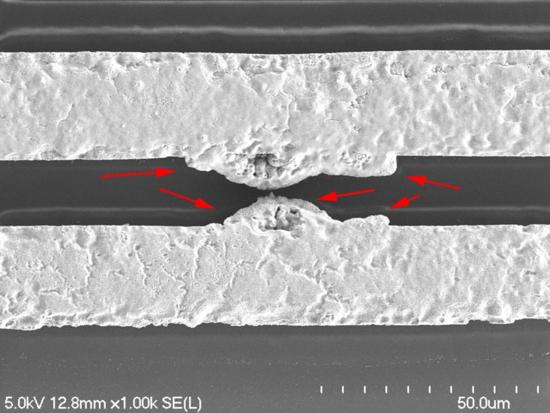Scanning Acoustic Microscopy

Scanning Acoustic Microscopy (SAM) works by directing focused sound from a transducer at a small point on a target object. Sound hitting the object is either scattered, absorbed, reflected (scattered at 180°) or transmitted (scattered at 0°). It is possible to detect the scattered pulses travelling in a particular direction. A detected pulse informs of the presence of a boundary or object. The `time of flight' of the pulse is defined as the time taken for it to be emitted by an acoustic source, scattered by an object and received by the detector, which is usually coincident with the source. The time of flight can be used to determine the distance of the inhomogeneity from the source given knowledge of the speed through the medium.
Based on the measurement, a value is assigned to the location investigated. The transducer (or object) is moved slightly and then insonified again. This process is repeated in a systematic pattern until the entire region of interest has been investigated. Often the values for each point are assembled into an image of the object. The contrast seen in the image is based either on the object's geometry or material composition. The resolution of the image is limited either by the physical scanning resolution or the width of the sound beam (which in turn is determined by the frequency of the sound).
Using a Matec Micro-Electronics Scanning Acoustic Microscopy, Priority Labs can perform non-destructive imaging using ultrasonic waves to detect delamination, voiding, and features present in a sample. Priority Labs performs both reflected and through scans of samples at transducer frequencies of 15 MHz, 75 MHz, and 100 MHz.
Scanning Acoustic Microscopy Gallery

